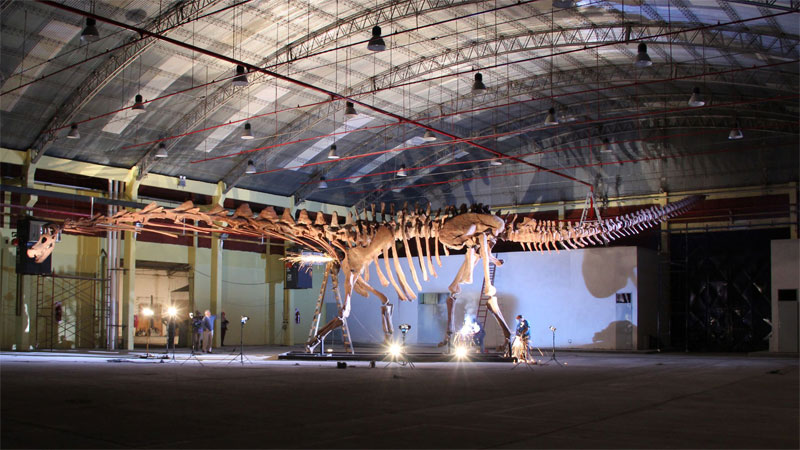|
A cast of the world’s most complete Titanosaur – one of the largest dinosaurs ever discovered – will make its European debut in an exhibition at London’s Natural History Museum (NHM) next spring.

Lauren Heath-Jones | Planet Attractions | 28 Nov 2022


A cast of the world’s most complete Titanosaur – one of the largest dinosaurs ever discovered – will make its European debut in an exhibition at London’s Natural History Museum (NHM) next spring.
Housed inside the Waterhouse gallery, the interactive exhibition will showcase the life cycle of the Titanosaur, also known as Patagotitan Mayorum, from a football-sized egg to one of the most massive creatures to have ever walked the Earth.
Visitors will be able to interact with several real specimens, including a fossilised Titanosaur femur bone and a sauropod skull, and even walk beneath the behemoth, which, at 5m (16ft) tall, 37m (120ft) long, 57-tonnes, is 1m (3ft) taller and four times heavier than NHM icon Dippy the Diplodocus and 12 m longer than Hope, the blue whale that replaced Dippy in the museums’ iconic entryway in 2017.
“Patagotitan Mayorum is an incredible specimen that tells us more about giant titanosaurs than ever before,” said Prof Paul Barrett, a science lead on the exhibition.
“Comparable in weight to more than nine African elephants, this star specimen will inspire visitors to care for some of the planet’s largest and most vulnerable creatures, which face similar challenges for survival, and show that within Earth’s ecosystems, size really does matter.”
Live
|
|






Supplier Showcase 2025: The biggest attractions projects landing worldwide this year
|